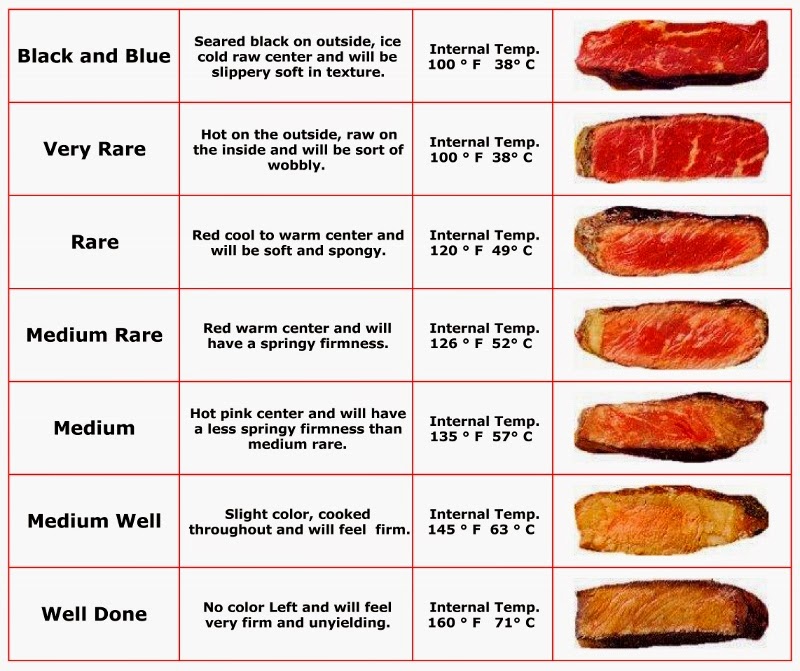

The internal temperature for a medium steak should be around 140 degrees. Courtesy of the Certified Angus Beef Brand Temperature for medium steak Cook steak to an internal temperature of 140 if you like it medium. Massip says stick with leaner cuts if you like your steak cooked medium-rare and recommends a hanger or strip steak.

Let the meat rest for up to 10 minutes before serving. For a 1-inch thick steak, this should take about 7 minutes of cooking on each side. For medium-rare, aim for an internal temperature of around 130 degrees. Medium-rare is the most-requested doneness at Capa where Massip's personal favorite is the 12-ounce bone-in filet. Season with salt and pepper, add grapeseed oil to a really hot pan and then sear." Temperature for medium-rare steak A medium-rare steak should be cooked to an internal temperature of 145 degrees. "Dry your steak, making sure to remove any excess water. Which steaks are best cooked rare? "The lean cuts are better," advised Massip, who added that the secret to getting a crusty sear on a rare steak starts with paper towels. Then let it rest for at least 5 minutes before cutting or serving. For a 1-inch thick steak, this will take about 5 minutes of cooking on each side. The desired internal temperature for a rare steak should be 120-125 degrees. Temperature for rare steak A rare steak should be cooked to an internal temperature of 130 degrees. Another reason to use a thermometer instead of your subjective eyesight? Steak usually isn't a cheap cut of meat and since it can be less forgiving, cooking it requires more precision. "It’s important to not judge meat doneness only by color because it can vary based on the type of meat you are cooking, or the process you are using to cook it," Massip told TODAY Food. Judging meat doneness only by its color is one of the most common food handling mistakes home cooks make - use a meat thermometer. According to Massip, all home cooks should invest in a meat thermometer. For thin items such as chops and hamburger patties, insert the thermometer sideways.Judging meat doneness only by its color is one of the most common food handling mistakes home cooks make.For ground meat (such as meat loaf), insert the thermometer into the thickest area.For whole poultry (such as turkey or chicken), insert the thermometer into the inner thigh area near the breast but not touching bone.For roasts, steaks, and thick chops, insert the thermometer into the center at the thickest part, away from bone, fat, and gristle.Use the thermometer toward the end of the minimum cooking time and allow it to remain in the meat for only 15 seconds, at a depth of 2 inches or to the indicator mark on the thermometer’s stem.įollow these guidelines for accurate thermometer readings: Instant-read thermometers give readings quickly, but they are not oven-safe and must not be left in the meat while it is cooking. Round-dial and digital instant-read thermometers are available from kitchen supply stores and hardware stores and cost from $12 to $20. To be certain, we recommend using an instant-read thermometer. (Consult the chart below for minimum internal temperatures.)

According to the USDA, different meats must reach different temperatures to be considered safe. Instead, it’s recommended that you use a meat thermometer to guage when your pork roast, chicken breast, or other cut of meat is truly ready to be served. But this involves guesswork, which is neither accurate nor safe! Traditionally, judging when a bird is done roasting has meant visually checking the interior color of the meat while it is cooking-the redder the color, the rarer the meat. Meat and poultry are cooked and juicy at certain temperatures but become dry and tough if cooked much longer. Advertisement Are You Cooking Meat Safely?


 0 kommentar(er)
0 kommentar(er)
